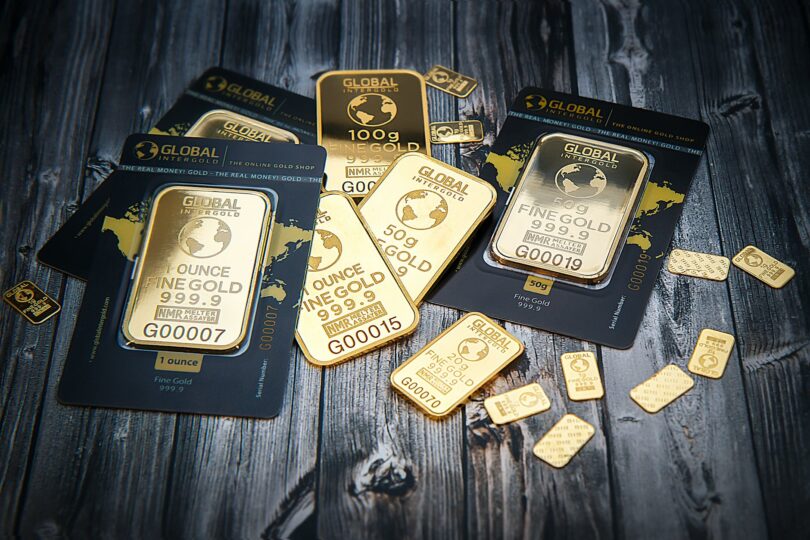I can’t believe I haven’t seen any explanations about how the Sprott Physical Uranium Trust (SRUFF) works, and how it helps to fuel the epic short squeeze going on in Uranium right now.
The physical trusts offered by Sprott are closed-end funds, meaning that when investors sell the fund, Sprott does not have to go out and also sell Uranium to fund outflows.
In other words, once uranium hits the Sprott vaults, it might as well be declared retired forever.
They are structurally diamond handed, which is important for a short squeeze to continue.
So how does more metal enter the fund?
Sprott has filed an ‘at the money’ share offering where they can issue new shares of the fund any time it trades at a premium to the fund’s net asset value.
Essentially whenever investors get excited and bid up the price of the ETF such that that shares are being bought for more than their underlying value, Sprott will issue new shares, sell them into the market (which helps bring down the premium), and then use this cash to buy more uranium for the fund.
In the span of a month investors already added enough uranium to the fund to exhaust Sprott’s $300 million offering.
Last week they filed a new offering to increase it from a $300 million program, to a $1,300 million ($1.3 billion) program.
While this filing process has been ongoing the past few days, Sprott has not been issuing new shares. So inflows into the fund are driving up the premium to NAV.
The premium now sits at a record high 28.5%.
For perspective, during the Uranium surge that took price from the $20s to the $40s over the past month, the typical premium for the fund was in the mid single digit %s.
So 28.5% is absolutely remarkable. This is a dam about to break and drown everyone who lives on the other side. Once Sprott is able to issue shares once again, it will now be able to buy more uranium out of the market than anyone thought possible. $180-$200 is entirely possible here as a blow off top (currently at $45 a pound).
And this is a minuscule market, so Sprott’s buying directly drives the price up. And because market participants know the price of uranium is effectively guaranteed to rise because of this guaranteed source of pent up demand, they are are willing to pay for the premium in the uranium fund to get a piece of the action.
This of course only drives the premium of the fund up further, allowing Sprott to issue even more shares, buy even more uranium, sending the uranium price up further, exciting more investors who will buy the fund, and the cycle repeats
This is effectively a short squeeze where the buying is being telegraphed ahead of time. Don’t get me wrong, the short squeeze has begun, but buying here is the equivalent of buying GME a when it was in the $50-$100 range on the initial surge.
So who’s short? There’s not actually a large existing short paper position, but rather a large implicit short position by the utilities who run nuclear power plants. They MUST continue to purchase uranium to power their nuclear power plants, but this market has been so depressed for so long, that consumption is now roughly 20% higher than annual production; Creating a supply deficit where buyers must compete to cover their implicit short. Remember, a short squeeze is when there is forced buying of a limited quantity of shares, which causes an exponential increase in the price of shares.
At some point utilities are forced to buy more uranium, but so far they are holding off (thinking prices will drop back down). They are using existing smaller stockpiles in the meantime, but eventually they have to buy (reactors need uranium to run). But they will be competing with buying from investors via the Sprott fund. What happens when prices don’t drop and instead continue rising? At some point a utility buyer will panic and start to buy (covering their implicit short) and this is when price will have a blow off top as others in the market begin to panic buy as well.
So what tickers can be offered up here?
Not many, because the uranium space is tiny and WSB has a $1.5 billion market cap minimum.
Options? You can, but premiums are absurd now that the squeeze has already begun.
Tickers:
$CCJ is one ticker you’ve likely heard of, and it’s the only one with mkt cap large enough to mention directly.
Sprott Uranium Trust is the vehicle I’ve written about here where you can buy uranium directly (rather than miners), and directly contribute to the squeeze, but I also can’t post the ticker yet due to mkt cap concerns. It’s also only available in Canadian and OTC Markets, but Sprott is trying to get it listed on the NYSE as well for the future. You can buy it via Fidelity and a few other brokers right now though.
Northshore uranium ETF has lots of miners in it but a mkt cap of $350m so no ticker
Want to sell shovels rather than set out on a mining adventure yourself? Sprott the company owns the uranium trust driving this whole thing and collects fees from it. Benefiting from the inflows into the fund as well as the underlying price appreciation of uranium. They also have direct exposure to several uranium miners they’ve invested in. They also aren’t big enough yet at $1 billion to post the ticker.
This uranium short squeeze, powered by the Sprott physical trust is everything the silver squeeze should and could have been back in the first quarter. If silver squeezers had bought the Sprott physical fund, PSLV, rather than iShares SLV, silver would be far higher now. Let this be an example of what’s possible in commodities when physical demand overwhelms a relatively limited supply of available metal!
This article was written by u/TheHappyHawaiian.




